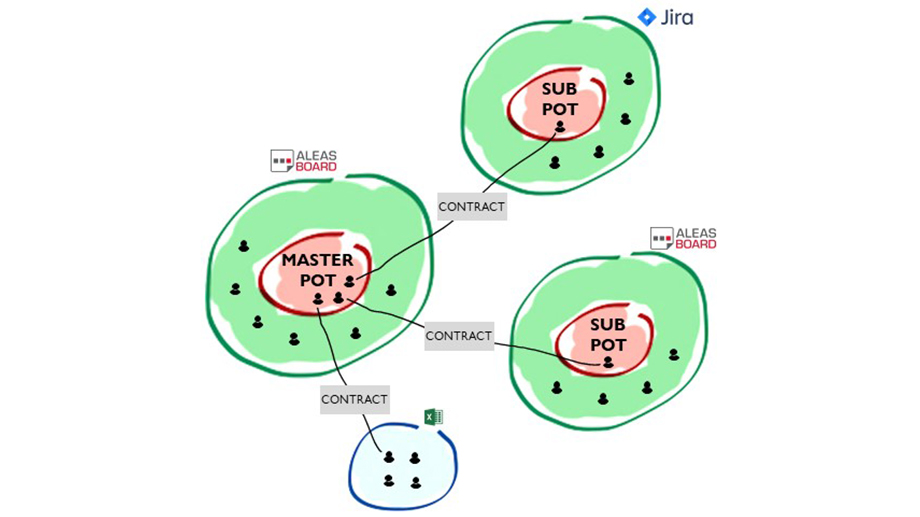Ist mein Projekt zu groß für agil?

When scaling large projects, many companies fall back on traditional structures and processes. But you can also take advantage of agility on a large scale. With STAGILE®@Scale, large projects with 100+ employees or a project program structure can be successfully implemented.
The effectiveness of agile scaling becomes particularly visible at the team level. In practice, the performance of a team can stagnate or even deteriorate above a certain size. This is primarily due to the increasing need for coordination because of the growing number of connections between team members. The experience of individual employees also has a massive influence on performance in large teams. Inexperience can act like a performance erosion accelerator.
More and more agile frameworks offer solutions for this issue. The advantage of STAGILE®@Scale is the particularly simple and quick implementation and the strong practical relevance. We are convinced that basic agile principles can and should be applied even in complex projects. We keep our approach as transparent and integrative as possible and ensure compatibility with other methods. The sub teams can use heterogeneous tools (e.g. ALEAS Board, Jira, Excel) and frameworks (e.g. traditional methods, Scrum, task-based approaches, etc.).
As the overview of the agile scaling frameworks shows, STAGILE®@Scale convinces with a high level of functionality combined with a very low method complexity:

STAGILE®@Scale differs from the most frequently used method Scrum of Scrum by additionally addressed methods in the area of Risk & Opportunity Management, the long-term planning horizon (master plan), a dynamic team model and last but not least by clarity in method implementation.
The scaling in STAGILE® projects is designed like a cell division process. If a team becomes too large, it splits into smaller sub-teams. All threads come together in the so-called Master Team. The individual teams are connected in terms of content via the Sprint Contract, which acts as a clearly defined interface.
STAGILE®@Scale thus covers not only the implementation phase (Scrum) but also the planning phase. As already mentioned, the Sprint Contract defines a clear and unambiguous interface between the individual teams, which also includes Risk & Opportunity Management and Lessons Learned. In addition, clear role descriptions are defined in STAGILE®@Scale to keep the coordination effort to a minimum.
The planning process as well as the implementation process follow a clearly defined, bottom-up sequence. This standardization helps to minimize process losses. Reporting and planning from the outside to the inside support a fast problem-solving and decision-making process and reflect the importance of each team member’s personal responsibility.